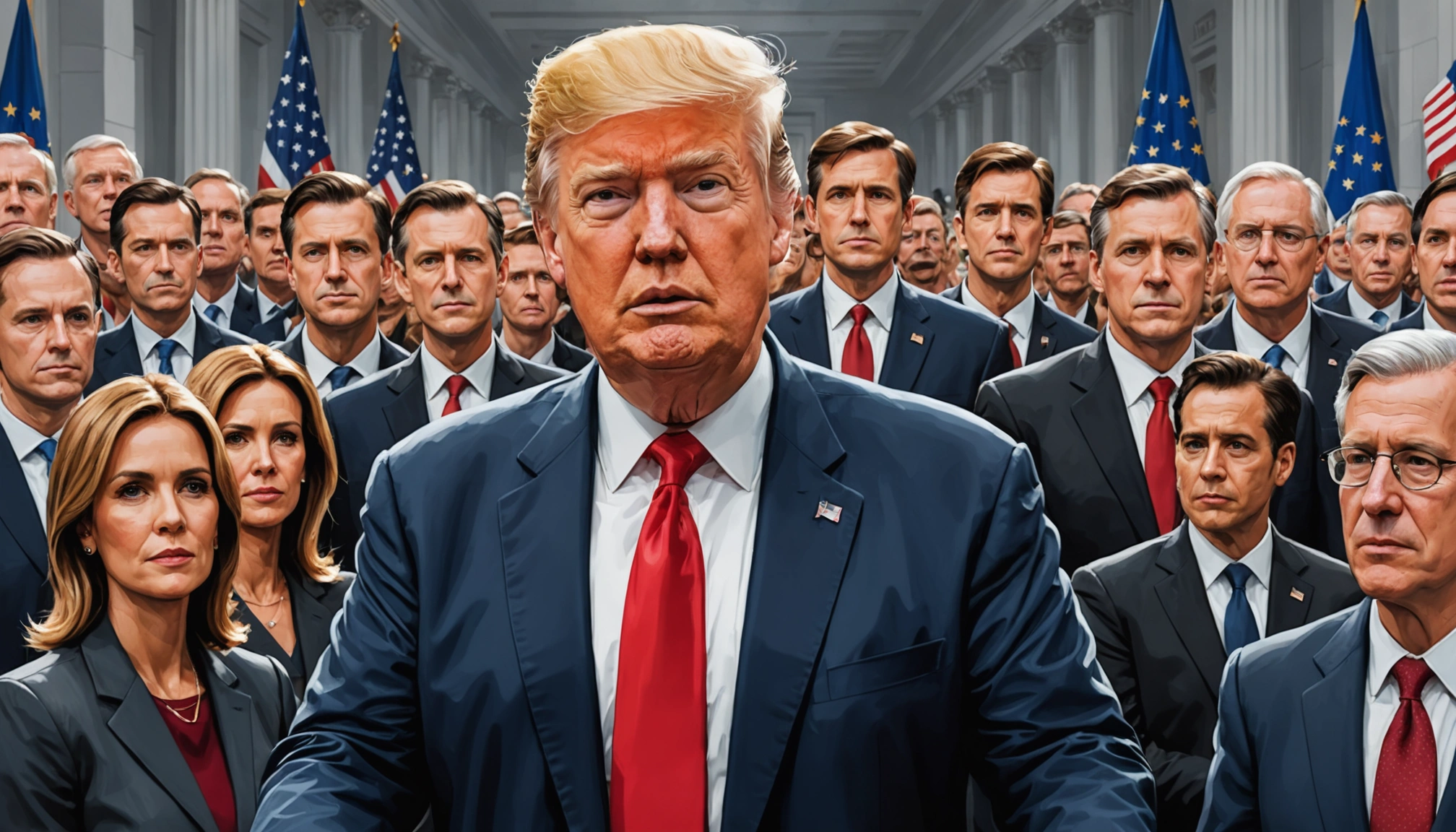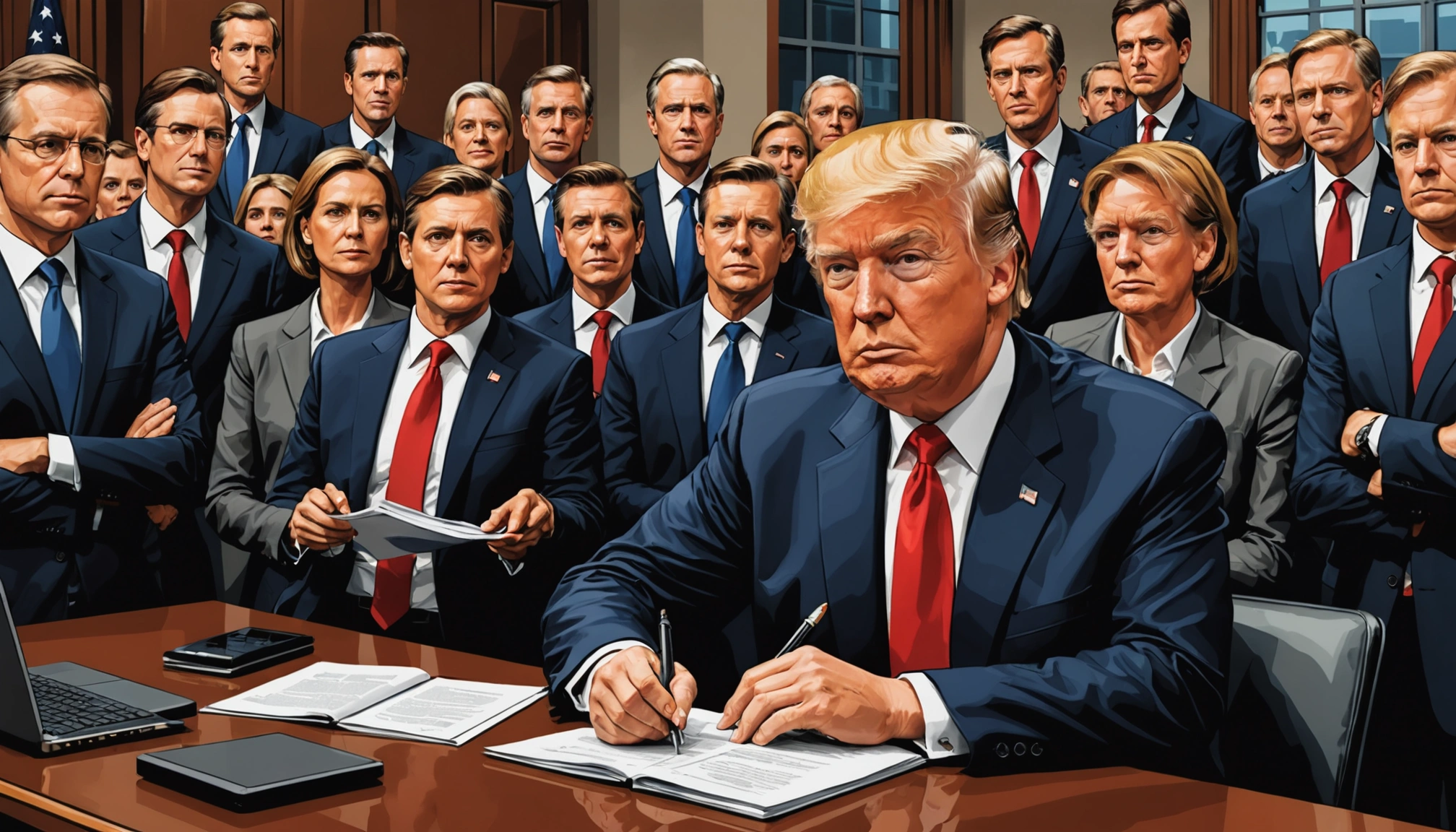EU Faces Uphill Battle Securing US Trade Pact Amid Trump's Tariff Threats

The European Union is navigating a complex and uncertain path as it seeks to secure a trade agreement with the United States, facing renewed pressure from President Donald Trump's threats of imposing significant tariffs. With a looming deadline and deep-seated disagreements, the prospects of a comprehensive deal remain unclear, raising concerns about potential economic repercussions.
Trump's Tariff Threat Looms
President Trump has repeatedly threatened to impose tariffs on goods from the European Union, escalating trade tensions between the two economic powerhouses. Most recently, Trump threatened a 50% tariff on EU goods, before agreeing to delay implementation until July 9 to allow for further negotiations. This is not the first time Trump has used tariffs as a negotiating tactic, having previously imposed tariffs on steel and aluminum imports, as well as other goods from various countries. These actions have fueled global economic uncertainty and strained relationships with key trading partners.
The EU has consistently objected to what it considers unjustified and illegal U.S. tariffs. Despite the pressure, the EU maintains it is not willing to yield to Trump's demands for a 10% global baseline tariff. Paula Pinho, the EU's chief spokesperson, stated that reports suggesting the EU would accept such a tariff are "speculative and do not reflect the current state of discussions."
Negotiations and Sticking Points
Negotiations between the U.S. and the EU have been ongoing, but significant differences remain. The EU aims to address trade imbalances and ensure fair competition, while the U.S. seeks greater access to European markets and concessions on agricultural products. Key areas of contention include tariffs on industrial goods, agricultural standards, and regulatory alignment.
The EU has offered to drop its tariffs on industrial goods and collaborate on addressing the glut of Chinese exports. Other potential concessions include recognizing U.S. safety standards on cars and reducing duties on American ethanol, although these face political hurdles within the EU.
However, the EU is wary of revisiting contentious issues that derailed previous trade talks, such as the Transatlantic Trade and Investment Partnership (TTIP). European politicians are hesitant to make significant concessions or compromise on health, environmental, and safety standards.
The Ghost of TTIP
The failed TTIP negotiations serve as a cautionary tale for the current trade talks. Launched in 2013, TTIP aimed to create a comprehensive trade agreement between the U.S. and the EU, but the talks collapsed three years later due to strong opposition from European politicians and civil society groups. Concerns over food safety, environmental regulations, and the potential for U.S. corporations to undermine European standards led to widespread protests and ultimately doomed the agreement.
The legacy of TTIP continues to cast a shadow over the current negotiations, making European leaders reluctant to pursue a similar sweeping deal. Instead, they may focus on a more limited agreement that addresses specific trade barriers and avoids controversial issues.
Potential Outcomes and Implications
Given the complexities and disagreements, the outcome of the trade negotiations remains uncertain. Several scenarios are possible:
- Comprehensive Trade Agreement: A comprehensive agreement that addresses a wide range of trade issues and reduces barriers to trade between the U.S. and the EU. This outcome would likely boost economic growth and create jobs on both sides of the Atlantic, but it would require significant compromises and concessions from both parties.
- Limited Trade Deal: A more limited agreement that focuses on specific sectors or issues, such as industrial goods or regulatory cooperation. This outcome would be less ambitious than a comprehensive deal, but it could still provide some benefits to businesses and consumers.
- Trade War: A breakdown in negotiations that leads to the imposition of tariffs and retaliatory measures by both sides. This outcome would harm businesses, disrupt supply chains, and increase prices for consumers.
The implications of each scenario are significant. A comprehensive trade agreement could strengthen the transatlantic relationship and promote economic prosperity. A trade war, on the other hand, could damage the global economy and undermine international cooperation.
Conclusion: A Delicate Balancing Act
As the July 9 deadline approaches, the EU faces a delicate balancing act. It must navigate Trump's aggressive trade tactics while safeguarding its own interests and values. Securing a trade pact with the U.S. would provide a significant boost to the European economy, but not at the expense of compromising its standards or caving to undue pressure. Whether the EU can successfully thread this needle remains to be seen, but the stakes are high for both sides of the Atlantic.
Related Articles

Myanmar's Rare Earths Boom: A Dirty Secret Fueling Green Tech

Trump's Anti-Woke Policies Spark Mixed Reactions from German Firms on DEI
